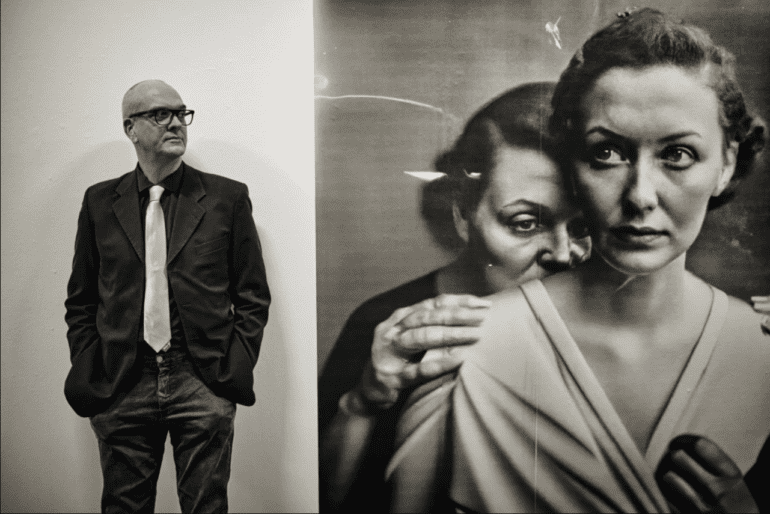TL;DR:
- Annika Nordenskiöld wins the world’s first AI art award for a lifelike image created using computer prompts.
- She views AI as a collaborative tool, blurring the line between reality and digital art.
- “Promptography” emerged as a term to describe AI-generated art, leading to a heated debate.
- German photographer Boris Eldagsen refuses a photography award for an AI-generated image, sparking discussion.
- Calls for an international roundtable on the future of photography ethics and authenticity.
- Concerns arise about the potential for disinformation in the evolving art landscape.
Main AI News:
In a groundbreaking moment for the world of art, Swedish artist Annika Nordenskiöld claimed the prestigious title of the world’s first recipient of the Artificial Intelligence Art Award at the Ballarat International Foto Biennale. Her winning masterpiece, “Twin Sisters in Love (2023),” captured a lifelike portrayal of siblings tenderly cradling an octopus, all brought to life through the creative application of computer prompts.
Accepting the $2000 prize on a Sunday in Sweden, Nordenskiöld shared her perspective on the evolving relationship between artists and AI, stating, “I understand the fear of AI and find it somewhat healthy. But I see it more like a colleague I am working with.” Her unique artistic journey revolves around the realm of the intangible, as she elaborates, “None of these places, people, or creatures exist in the physical realm.”
Nordenskiöld recently showcased her work in an exhibition titled “We Don’t Exist” in Stockholm, and she’s on the verge of publishing her third book, leveraging text prompts to craft photo-like images that challenge conventional notions of reality. “Many people say my pictures make them uncomfortable,” she reflects. “When I explain that AI creates them as a kind of collage… many laugh, others are distressed and find them disgusting.“
The organizers of the Ballarat festival have embraced the ambiguity surrounding AI-generated art, introducing the inaugural AI prize, aptly named “Prompted Peculiar.” It marks a significant milestone as the world’s first award of its kind within an international photography festival, sparking a vital conversation about the distinction between traditional photography and the emerging genre known as “promptography.”
The term “promptography” was coined this year when German photographer Boris Eldagsen, a judge at the Ballarat festival, declined the first prize at the Sony World Photography Awards. Eldagsen, who created the image “The Electrician” using AI, firmly stated that his work was “not photography.” Reflecting on his role as a catalyst for this dialogue, he remarked, “Now the default position for when you look at pictures online will be to assume they are artificially generated – rarely are they fact-checked … which presents a problem for picture editors, photographers, developers, AI experts, and social media consumers the world over.“
Eldagsen, along with Una Rey, editor of Artlink magazine, and Ballarat International Foto Biennale CEO Vanessa Gerrans, has called for an international roundtable conversation on the evolving landscape of photography. The distinction between a traditional photographer capturing chance encounters in the physical world and a “promptographer” crafting computer-generated imagery from a darkened room has blurred the lines of authenticity in visual storytelling. Eldagsen suggests the need for a code of ethics, possibly incorporating watermarks, to guarantee the genuineness of photographs.
In a world where photography cooperatives like Magnum and legal experts worldwide seek to clarify copyright laws related to photographed content, Gerrans shares her concerns about the potential dissemination of disinformation. “There are clearly unresolved issues around moral rights and consent; these are the conversations we need to start having so we can make sure we’re primed and acting ethically and responsibly.”
As technology continues to reshape the visual landscape, Prompted Peculiar serves as an open invitation to debate the place of this emerging art form, “promptography.” Gerrans aptly concludes, “Prompted Peculiar is an invitation to debate where this new art of ‘promptography’ belongs.” The discussions held during a weekend of public forums in Ballarat have set the stage for a critical examination of the intersection of art, technology, and ethics.
Legal expert Alana Kushnir, instrumental in crafting the terms and conditions of the competition that attracted entries from around the globe, lauds the festival’s audacious decision to embrace AI. “We don’t have much guidance when it comes to the law in this space,” Kushnir remarks. “We had to ask ourselves from an art history position, what is the difference between a photo and an image. There are parallels to when the camera was first invented – artists felt threatened. It will take time for the terms around IT and AI to align better.“

win Sisters in Love (2023) by Annika Nordenskiöld. Source: BALLARAT INTERNATIONAL FOTO BIENNALE
Conclusion:
The emergence of “promptography” through the world’s first AI art award signifies a significant shift in the art and photography industry. The blurred lines between traditional photography and AI-generated art prompt the need for ethical guidelines and a deeper conversation on authenticity. This development highlights the necessity for the industry to adapt to evolving technologies and navigate the challenges posed by AI-generated content.

